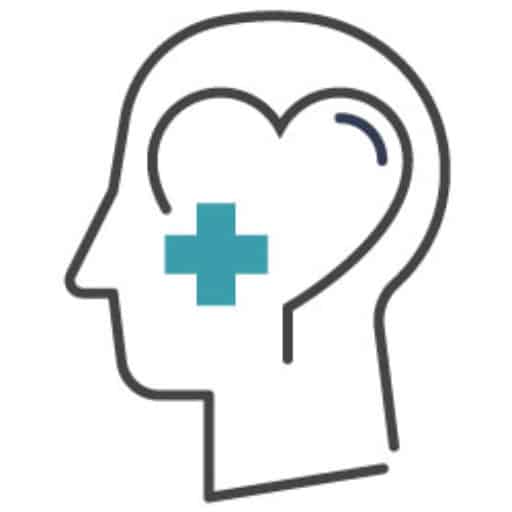Pica can commonly occur with pregnancy, but the disorder may also arise outside this nine-month period. Characteristic symptoms of pica, a type of eating disorder, include the consumption of items that aren’t food — such as ice, paper or chalk. If you’ve heard of pica or wonder why you’ve experienced strange cravings for non-edible items, this comprehensive guide provides details about the causes of pica, pica symptoms, treatments and associated concerns.
What Is Pica Disorder?
Pica occurs when someone eats items that aren’t meant to be consumed, most commonly clay, dirt or paint flakes. Other non-food items often associated with pica include human waste, chalk, glue, cigarette butts or ashes, sand, dirt, hair, buttons, metal fragments, baby powder, charcoal, eggshells, pebbles, pet food, soap or ice. People who have pica experience a compulsion, which means they crave the item they consume and can’t stop themselves from eating it. Children who have pica may also display behavioral problems at home and school.
Pica disorder more commonly affects children younger than 6 rather than adults. However, it’s also common during pregnancy and among people with schizophrenia, obsessive-compulsive disorder, autism spectrum disorder (ASD) and other developmental disorders. A study published in the journal Pediatrics found a pica rate of more than 23% among participants with ASD as compared to 8.4% in a group with other developmental disorders and 3.5% in children with no noted developmental disorders.
Doctors aren’t sure what causes pica, but some research suggests it results from a zinc or iron deficiency. Children sometimes grow out of this compulsive behavior as they get older. Kids who have autism spectrum disorder may struggle to tell the difference between food and non-food items. They may also enjoy the sensory experience of consuming the items.
Pica can be a culturally accepted behavior in some parts of the world. For example, the Cleveland Clinic reports that some religious sects and communities consume dirt or clay.
What Are the Tell-Tale Signs of Pica Disorder?
It’s evident that someone has pica disorder when they consume non-food items and display behavior like chewing paper, so many people self-diagnose with this condition before they see a doctor. Depending on the items they eat, people with pica can have diverse symptoms. They may experience stomach pain, vomiting, nausea, constipation, diarrhea or blood in the stool caused by an internal laceration.
People who rely on extreme diets to lose weight are more likely to develop pica. They may also display signs of malnourishment, such as feeling cold, limited concentration, non-healing wounds, weakness, lack of immunity, weakness, fatigue, and lack of interest in eating and drinking.
Severe stress can also cause symptoms of pica, especially in children. It’s especially noted in children who have experienced poverty, abuse or neglect. Pica may occur in conjunction with other compulsive disorders such as skin picking and hair pulling.
What Are Common Non-Food Items Consumed by Individuals with Pica Disorder?
The type of non-food substances ingested by people with pica usually depends on their age and the availability of things that should not be eaten. For example, a five-year-old child with autism and pica disorder will likely ingest common household items like pieces of bar soap, pet food, paper, hair/lint/dust, and talcum powder. This child may try to eat soil, pebbles, and leaves when they go outside.
Alternately, a developmentally disabled adult with pica disorder who lives in a group home will likely eat things that they can access in the home, such as paper, paint and wood chips, arts and crafts items, and soil from potted plants.
Other non-food items consumed by children and adults with pica disorder include:
- Buttons
- Modeling clay/Play-doh
- Sand
- Rocks
- Cigarettes
- Glue
- Feces
- Chalk
- Unused/used matches
- Wood chips/splinters
This is not an exhaustive list. Reports of surgeons finding screws, earphones, batteries, and even razor blades wrapped in paper have been written about in medical journals.
What Does It Feel Like to Have Pica Disorder?
Pica is a compulsive disorder, which means someone who has it can’t control their urge to eat the non-food item even when they try very hard to stop. While pica isn’t inherently dangerous, it can cause health complications. Hard substances such as ice damage the teeth, increasing the risk of cavities and gum disease.
Some people who have pica consume clay or dirt, which can cause them to contract bacterial illness and parasites. For example, roundworm infection can be found with a pica diagnosis.
Some consumed materials, like hair, can cause damage to the internal organs when swallowed. Choking is also a serious health concern, particularly for parents when children have pica. Pica may lead to electrolyte imbalance, which can cause seizures in severe cases.
Many people who have pica hesitate to seek help for this condition. They may feel embarrassed about their behavior, or they may not even realize it poses health concerns.
Symptoms of Pica
Before a professional diagnosis can be made, a psychiatrist or eating disorder specialist will confirm the following signs of pica disorder, as described by the DSM-IV:
- Repetitive behavior: The consumption of non-food items must continue for at least two months. A child or adult eating dirt occasionally is not a symptom of pica disorder.
- Age inappropriateness: While it is normal for infants and young children to explore their environment by putting objects in their mouths, this behavior should diminish as they mature. A 12-year-old should not be consistently “mouthing” or consuming non-food items.
- Not associated with cultural practices: for some cultures, it is normal to consume non-food items. The DSM-IV refers to this practice as a “culture-bound syndrome” that does not involve a mental illness or developmental disorder. A type of white clay called kaolin is regularly eaten by people living in sub-Saharan Africa, Latin America, and rural Georgia in the U.S. simply because they believe the clay is good for their health.
- Individuals diagnosed with pica disorder do not understand that consuming non-food items may cause poisoning, teeth chipping/cracking, gastrointestinal blockage, blood infections, and other serious medical complications. Although their pica symptoms may interfere with daily functioning, they may continue to ingest substances until they must be hospitalized.
Who Is Most Commonly Affected By Pica?
Children or adults with one or more of the following conditions have a higher risk of developing pica disorder:
- Mental illness (schizophrenia, psychosis, obsessive-compulsive disorder (OCD), schizo-affective disorders)
- Developmental/intellectual disorders (autism, ADHD, learning disorder)
- Low socioeconomic status/living in poverty
- Childhood neglect
- Epilepsy/neurological disorders
- Learned behavior/family history of pica disorder (there is no evidence that pica is a genetic disorder)
- Iron-deficiency anemia, malnutrition, or other nutritional deficiencies involving zinc and other minerals
- Severe anxiety and emotional disorders
Pica associated with anxiety and emotional disorders seems to calm the person in the way that self-harming behaviors relieve anxiety. Psychologists hypothesize this may be the reason why some adults who suffered childhood neglect and abuse turn to pica to self-medicate.
Pregnancy and Pica
Pica in adults who do not have a mental illness or developmental disorder usually affects pregnant women and individuals with sickle cell anemia. While the exact cause of pica in pregnant women remains uncertain, some research indicates a possible link to iron deficiency. There is also speculation that non-food cravings could be the pregnant body’s way of getting vitamins or minerals that are not obtained by eating actual food. In some cases, pregnant women may have an undetected mental or physical health condition that is causing pica disorder.
Sickle Cell Disease and Pica Disorder
About one-third of children and adults with sickle cell disease develop pica symptoms. Cases of pica disorder in sickle cell disease patients have been attributed to low iron, low hemoglobin, poor nutrition, and pregnancy. Older sickle cell disease patients who have had at least one stroke are at an even higher risk for developing pica.
What Is the Treatment for Pica?
Health care providers specializing in treating pica will determine the right course of action when someone displays these symptoms. The doctor will review any physical symptoms associated with your non-food consumption and ask you how long you’ve been experiencing the compulsive urge to eat the non-food item. They may also run X-rays and blood tests to look for intestinal blockages, signs of infection and nutritional deficiencies such as lack of zinc or iron. Generally, symptoms that last at least four weeks constitute pica.
The approach for treating pica depends on the underlying cause of the illness and the resulting health complications. The provider will address issues like ulcers, infection and digestion concerns. For example, people who develop lead poisoning must have chelation therapy, which involves consuming a medication that carries the lead out of the body. They may also prescribe a special diet or supplement if your pica results from a vitamin deficiency.
Referral to a mental health specialist is necessary when mental health concerns contribute to compulsive behavior. A pediatric mental health specialist may be recommended for children. Adults who have pica can potentially benefit from seeing a psychologist or psychiatrist who specializes in applied behavior analysis, a technique to target and address behavior that you want to change.
Differential reinforcement, another effective treatment methodology for pica, involves replacing unwanted behavior with desirable behaviors and activities. Some people see success with aversion therapy, which focuses on rewards for the intended behavior and consequences for the unwanted actions (in this case, consuming non-food items).
Medical Evaluation
Before determining which treatment modality would best address the cause of pica, physicians will conduct a comprehensive medical evaluation to identify possible underlying physiological issues. Blood tests can reveal if a nutritional deficiency exists. They can also detect other medical reasons for pica, such as roundworm infections, an electrolyte imbalance, or blockages within the small and large intestines.
Numerous health conditions can reduce the body’s ability to absorb adequate amounts of minerals from digested food. Parasitical infections can also deplete levels of vitamins and minerals in the body to the point where pica symptoms emerge.
Behavioral Interventions
Children with an autism spectrum disorder and pica may respond to one or more behavioral interventions. Conducting a Functional Behavioral Assessment (FBA) can help clinicians understand the function or purpose of the behavior. The results of an FBA aid in guiding psychologists when selecting a behavioral therapy to address triggers of pica symptoms.
Behavioral interventions used to treat pica include:
- Positive Reinforcement: Encouraging and rewarding positive behaviors, such as choosing to eat appropriate foods instead of non-foods.
- Response Interruption: Prompting the child to stop consuming non-foods by redirecting their attention with age-appropriate activities
- Environmental Modifications: Making adjustments to the child’s environment so they have reduced access to non-food substances and easier access to food items. This form of behavioral therapy is sometimes used before introducing positive reinforcement or response interruption.
- Developmentally challenged adults with long-term pica symptoms may respond to behavioral interventions if they have received minimal or no treatment for pica in the past. Sensory interventions may be more successful in treating pica when pica symptoms are associated with autism spectrum disorders, sensory processing disorders, and ADHD. An example of a sensory intervention might involve replacing the desired tactile sensation of eating dirt with a similar sensation, such as eating bits of granola or crumbled rice cakes.
- Nutritional counseling: adults with pica may benefit from receiving nutritional counseling if nutritional deficiencies are identified as a primary cause of pica symptoms.
- Psychological therapy: when a non-psychotic mental illness is contributing to pica, such as generalized anxiety disorder or obsessive-compulsive tendencies, cognitive-behavioral therapy used in conjunction with medications can help manage symptoms of pica. Dialectical behavior therapy (DBT) is a common treatment for people with pica and borderline personality disorder or OCD. By combining cognitive-behavioral techniques with mindfulness and acceptance strategies, DBT aims to help individuals regulate emotional states that trigger and sustain the consumption of non-food items.
Does Pica Need Lifetime Management or Can it Be ‘Cured’?
If you or a family member shows signs of pica, it’s important to seek treatment from a professional health care provider. Although some cases resolve without medical care (especially in children), the condition can create serious health complications without medical attention. Most people with pica respond well to treatment and find the behavior resolves after a few months of medical care. However, some people develop chronic compulsive pica and may require ongoing mental and physical health care to keep symptoms under control.
The Importance of Talking to a Professional
Contact Restore if you’re looking for a mental health provider in Florida. We can also connect you with help for underlying conditions that can cause pica, such as schizophrenia, stress and anxiety.



